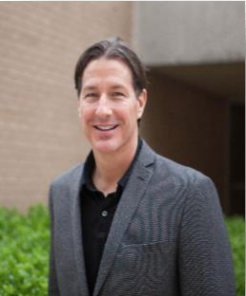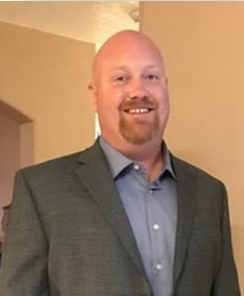Welding on a micron level to restore and repair parts at a fast pace and cost effective is the core of Directed Energy Deposition or DED, also called laser engineered net shaping or LENS (Optomec’s version of DED). It’s an additive manufacturing process in which focused thermal energy is used to fuse materials by melting them. It is one of the fastest metal Additive Manufacturing processes available today and Optomec is one of the top companies that is doing it.
Based in Albuquerque, New Mexico, the firm is changing the way industries are approaching sustainable repairs to some of the most complex machinery around. From plane parts to tank gear repairs, many companies are looking into this 3D printing technology to save time and money.
“Hundreds of billions of dollars are spent on spears and overhauls globally, in the US alone 3% of GDP goes towards corrosion costs per year, that’s 300 billion dollars. So instead of replacing parts it would be more cost effective to restore or repair them, making DED really important in this type of industrial markets,” suggested Tom Cobbs, LENS Product Manager for Optomec, during their latest Webinar.
According to Cobbs, the DED process speed will save considerable money and repair time. Also, there is no need for additional support structures when building, and the process has a lot of flexibility – it allows for starts and stops, in situ adjustments, and increase or decrease of powder flows.
It also involves a wide range of materials that can be processed allowing for functional grading since metal powders can be blended during building to create new alloys.
DED has quite a few advantages over traditional arc fusion welding processes, such as lower, more precise heat input, fine grain structure, less base metal dilution, less residual stresses or distortion. In addition, travel speeds are considerably faster, there is a much smaller heat affected zone, and little to no finishing requirements, saving time and wasted material.
Lucas Brewer, a LENS Applications Manager at Optomec offered some real world examples that were compelling evidence of the benefits of this technology, such as the repair of an US Army M1 Abrams Tank engine. LENS is very well suited for this type of repair because it works on a low heat affected zone, giving the Optomec team leeway to add the material needed without distorting the portions and parts that weren’t damaged.
“The M1 Abrams Tank needed repairs on rotors, nozzle and compressors, and our team developed at least seven of these qualified repairs for the Tank’s Honeywell AGT 1500 gas turbine engine and saved the US Department of Defence 5.5 million dollars annually, so repairing it at Optomec cost less than a third of the price of buying an entirely new part,” said Brewer.
From last Thursday’s presentation, it was clear that many broken parts could be fully repaired and back in operation in a matter of hours at Optomec, instead of the usual weeks or months it takes for new parts to arrive. The metallurgical bonding process is ideal for restoration of parts, and very well suited for feature additions and part modifications, functional grading as well as coating.
At the Connecticut Center for Advanced Technology (CCAT) they introduce and validate new technology for manufacturers, developing research and applications for industry, academia and Government entities. In 2011 they purchased Optomec LENS CS 1500 with three powder hoppers for functional gradient parts, and according to its Additive Manufacturing Senior Engineer, Jeffrey L. Crandall, “there’s hardly anything we can’t do with this machine from a materials perspective”.
Looking to expand the research on applied developments for a wide variety of industries, colleges and universities, CCAT (a non-profit) is doing some interesting work with aerospace industry. For example, an Inconel casing is being replaced by new design, for which CCAT successfully developed a repair process using DED on the Optomec machine.
“This technology is effective for high dollar value repairs and it’s great for legacy parts, for which there are almost no spares, so LENS technology is fantastic for doing that kind of work. Sometimes, even if the replacement parts are available there is an extremely long wait time and could take weeks to arrive, so our ability to do this repair is critical for the machine to fully function,” explained Crandall.
Optomec’s version of DED has seen them recently releasing two new machines for next-generation metal additive manufacturing in 2019. The firm has been working on the technology for over 20 years and has 100 Optomec systems operating worldwide. With a footprint that is expanding to Europe and the Asia Pacific region at a fast pace, we are sure to hear more about DED.
Subscribe to Our Email Newsletter
Stay up-to-date on all the latest news from the 3D printing industry and receive information and offers from third party vendors.
You May Also Like
Air Force Awards Fortius Metals $1.25M to Qualify 3D Printing Wire for Hypersonic Applications
AFWERX, part of the US Air Force Research Laboratory (AFRL), awarded a Direct-to-Phase II Small Business Innovation Research (SBIR) contract worth $1.25 million to Colorado’s Fortius Metals, to accelerate qualification...
US Air Force Awards JuggerBot $4M for Large-format Hybrid 3D Printing
Large-format 3D printer manufacturer JuggerBot has received a $4 million grant to develop a large format 3D printer, courtesy of the Under Secretary of Defense, Research and Engineering Manufacturing Technology...
Where Have All AM’s Unicorns Gone?
In the rapidly evolving world of 3D printing, startups valued at over a billion dollars, known as unicorns, once seemed as fantastical as the mythical creatures themselves. While a few...
How My Childhood Fascination with Planes Led to Investing in 3D Printing
My fascination with aerospace started young, and I started studying planes–identifying them in the sky and learning everything I could about how they work. Fast forward to my first week...






































